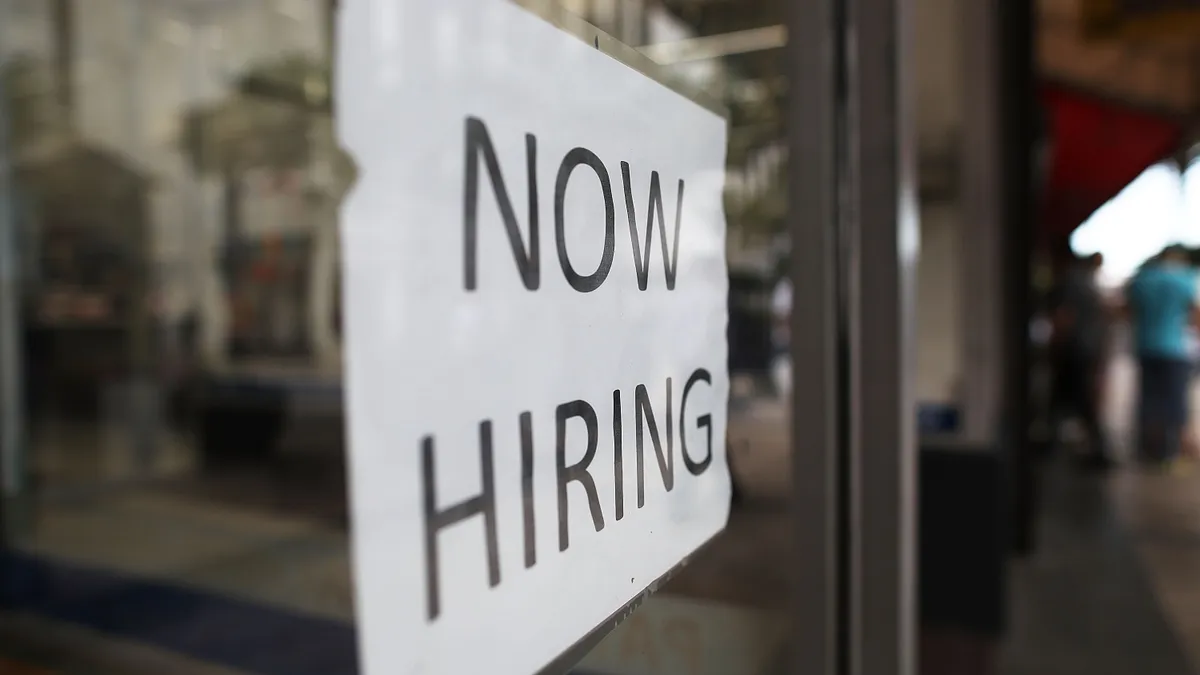Dive Brief:
- Several key factors are slowing commercial construction in the U.S. and one of the industry's largest trade groups is looking to Washington, D.C., for solutions.
- Nonresidential construction activity dropped in May as firms struggled with supply chain disruptions, rising materials prices and labor shortages, according to the Associated General Contractors of America. Officials with the association called on President Joe Biden's administration last week to remove tariffs on key construction materials, allow unemployment supplements that are keeping people out of the workforce to expire and take steps to address supply chain backups.
- "Many construction firms would likely be even busier if only they could find materials for their projects and workers for their teams," said Stephen E. Sandherr, the association's chief executive officer in a statement. "Ending a program that is basically paying people not to work will help, especially if the administration also removes tariffs that are driving prices up on key construction materials."
Dive Insight:
Dozens of states have already cut off weekly $300 federal pandemic unemployment benefits in the hopes that their unemployed residents will head back to work. AGC officials noted that firms in states that have ended the unemployment supplements have experienced an increase in the number of workers looking for employment. They added that firms in other parts of the country are still struggling to find qualified workers to hire. The federal benefit is scheduled to expire on September 6.
Nevertheless, in two states that have pulled back on benefits — Maryland and Indiana — judges have recently issued rulings requiring them to continue paying pandemic unemployment aid, according to CNET. Jobless residents in Texas have also filed a lawsuit seeking to bring back the aid that was cut off on June 26, though no decision has been made, CNET reported.
President Joe Biden indicated last month that he supports allowing the enhanced unemployment benefits to expire in early September, Business Insider reported.
"A temporary boost in unemployment benefits that we enacted helped people who lost their jobs through no fault of their own, and who still may be in the process of getting vaccinated," he said. "But it's going to expire in 90 days — it makes sense it expires in 90 days."
In addition to labor challenges, supply chain backups and rising materials prices are also hurting the industry. Nonresidential construction input prices increased nearly 24% in May compared to the previous year, according to an Associated Builders and Contractors analysis of U.S. Bureau of Labor Statistics data. In addition, the prices of petroleum, natural gas and lumber all skyrocketed over the past year.
The elevated prices will not decrease anytime soon, ABC chief economist Anirban Basu told Construction Dive. "While global supply chains should become more orderly over time as the pandemic fades into memory, global demand for inputs will be overwhelming as the global economy comes back to life."
In response, the AGC released the third edition of its Construction Inflation Alert to inform project owners and government officials about the threat to project completion dates and contractors' financial health.
"Being able to find workers is important, but contractors also need materials delivered on time and at a reasonable cost, to be successful," Sandherr said.
While residential construction has seen gains since last year, nonresidential construction spending has lagged, according to an AGC analysis of federal construction spending data. Among the other large private nonresidential project types, commercial construction—comprising retail, warehouse and farm structures — retreated 2.6% year-over-year and 0.7% for the month. Manufacturing construction fell 3.2% from a year earlier and 2.7% from April. Office construction decreased 8.3% year-over-year but remained flat from April.
Public construction spending plunged 8.7% year-over-year and 0.2% for the month. Among the largest segments, highway and street construction declined 4.3% from a year earlier, although spending rose 1.4% for the month. Public educational construction decreased 14.2% year-over-year and 1.9% in May. Spending on transportation facilities fell 10.4% over 12 months and 1.9% in May.














